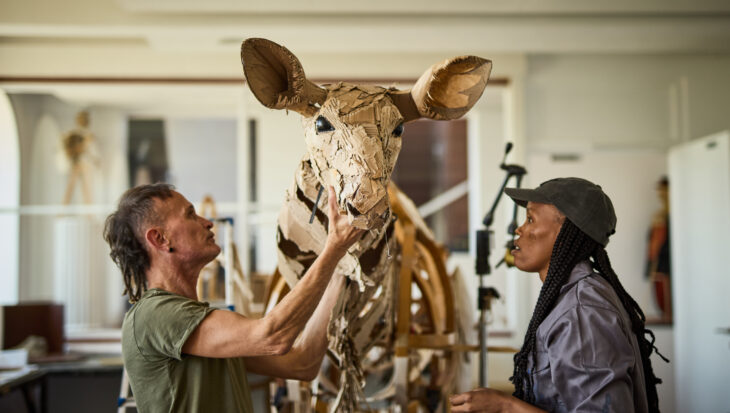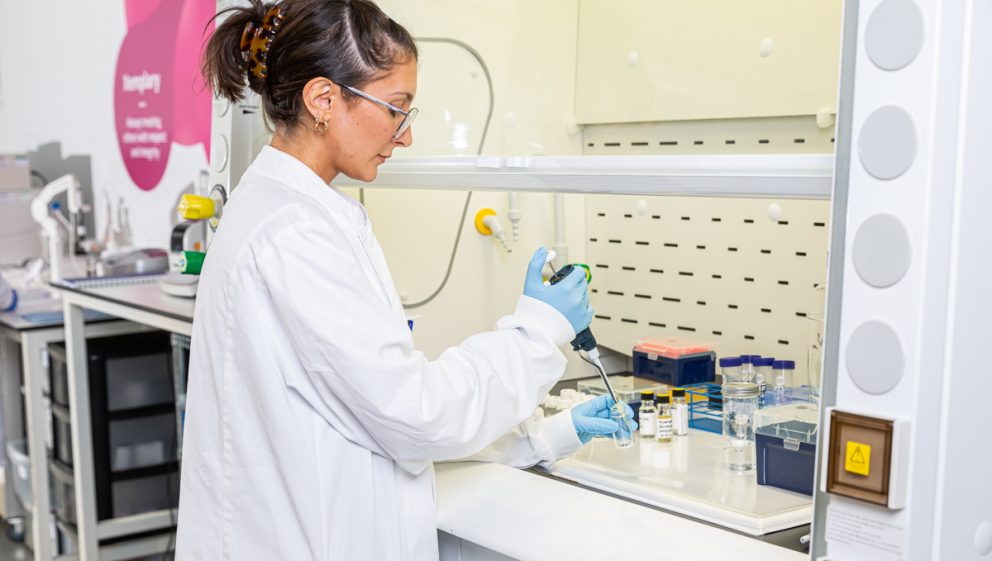‘The Herds’ will be arriving in London this Friday!
Have you heard? A breathtaking arts initiative, ‘The Herds’ will be arriving in London this Friday.
Posted 27 Jun 2025

Posted on the 1st March 2022
Animal Aid is delighted to announce that we have made a grant to the XCellR8 laboratory for the development of their acute toxicity test. This test, is being developed to replace the archaic, and incredibly cruel, LD50 test.

The LD50, originally designed in 1927, stands for lethal dose 50%. The test involves giving animals increasing doses of a substance to see how much of that substance will kill half of the animals. Animal Aid was founded in 1977, to campaign for a ban on all animal experiments, specifically concentrating on the LD50, back in 1979.
Despite major scientific advances in animal-free toxicology in recent years, the LD50 and similar tests, currently use around 80,000 animals a year in the EU alone. More than four decades ago, in 1979, Animal Aid were reporting on the terrible suffering which animals were subjected to, during the LD50. Symptoms included ‘tremors, convulsions, swellings, bleeding from the mouth and nose, bulging eyeballs and difficulty with breathing’.
XCellR8 are a completely animal-free laboratory, based in Cheshire. Not only do they not use any live animals or animal tissues, they have chosen to take the ethical, and scientific decision, not to use any animal-derived products in any of their tests. XCellR8 were founded in 2008, and in 14 years have made huge progress and scientific leaps – they were awarded the Lush Training Prize in 2013, in recognition of their work training the scientists of the future in non-animal methods.
‘Animal Aid are delighted to be announcing our support for XCellR8 and their ground-breaking work to replace the outdated and incredibly cruel LD50 test. It’s incredible that tests such as these persist today. The tide is turning against animal experiments – the scientific evidence of their unreliability and the public repulsion at the breeding, harming and killing of animals is mounting every day. It’s time for humane, cutting-edge science, the likes of which is exemplified by XCellR8’
Iain Green, Animal Aid Director.
Acute toxicity refers to the adverse effects of a chemical, either swallowed, or absorbed through the skin. Evaluating acute toxicity is one of many safety tests legally required to ensure chemicals and substances are safe for human use. At XCellR8, the measurement of ‘toxicity’ is assessed by studying the health of human cells used in the test.
Chemicals, including those used in household products.
The cells used in the test are known as fibroblasts. In the human body, fibroblasts are involved in wound healing and making connective tissue. The fibroblasts XCellR8 use come from human tissue, typically from face lifts. This is tissue that would otherwise be discarded. The patients give their consent for their tissue to be used and it is then processed – checked to ensure the cells are safe for XCellR8s scientists to use – by a company who send the cells to XCellR8.
For chemical ingredients and finished products, such as household products, it is a legal requirement that they are evaluated to predict how harmful they are to humans. Unfortunately, this can involve the use of animals.
These types of animal ‘models’ have been widely discredited due significant ethical concerns and a lack of scientific relevance to human responses.
Have you heard? A breathtaking arts initiative, ‘The Herds’ will be arriving in London this Friday.
Posted 27 Jun 2025

As the greyhound racing industry releases its annual data on the number of dogs’ deaths, a raft of well-known names - alongside their canine friends - has called upon the Government to end greyhound racing....
Posted 26 Jun 2025
